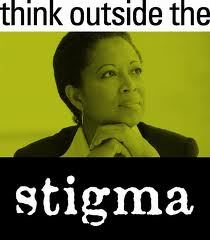
A March 2012 news release from hopkinsmedicine.org stated AIDS experts from Johns Hopkins were “surprised and dismayed” that their latest study showed the number of new cases of HIV infection among black women was five times higher than previously estimated by the Centers for Disease Control and Prevention. The study concluded the HIV epidemic still rages in urban areas where HIV and poverty abound.
According to the website, women account for 25% of the 50,000 new HIV infections each year in the US. Of these newly infected women, sixty-six percent are black even though they only represent 14 percent of the US overall female population. Sexually active African American women in populous urban cities are highly susceptible to infection.
Of the people receiving anti-HIV treatment with anti-HIV drugs in clinical trials, only 15% are women. Even fewer are women of color. Though they represent a disproportionately high number of new HIV cases, they are least likely to participate in a clinical trial.
A new article, “Insights on GRACE (Gender, Race, and Clinical Experience) from the Patient’s Perspective: GRACE Participant Survey” from the AIDS Patient Care and STDs website is focused on why women, especially women of color are so poorly represented in HIV drug trials.
A survey of participants who received anti-viral therapy and asked to evaluate their experience showed 76% felt the clinical trial made feel differently about their care, more focused on their health and 87% continued treatment after the trial ended.
It appears once women enroll in an HIV clinical trial and begin the process of adherence to medication while focusing on their health, the outcome is positive, however more needs to be done to get them to take that first step. According to the article, access to treatment is a strong motivator to enroll while fear of stigma, being a primary caregiver for children, unemployment and transportation issues were cited as barriers to entry.
Culturally, HIV is a male dominated community and women were not aggressively recruited for trials because their infection rates were too low to justify the focus. That’s true when you underestimate the number of women infected.
If your participants don’t align with the target population you are trying to treat, a clinical trial loses effectiveness. Many anti-viral therapies involve altering the CCR5 receptor that allows HIV to infect a cell. Generalizing gene therapy to the African American population is unhelpful since the CCR5 gene has different characteristics in African Americans and women. As an African American woman, you are an outlier.
Awareness is half of every battle. Identifying and reaching out to patients at high risk is a good start. Finding ways to remove those barriers to entry is another good move. We need to offer transparent trials that get past fear, stigma and mistrust. To develop better treatments, we need to be more aggressive in recruiting black women in HIV clinical trials. We need more outliers.
Sherry Dineen
#aiatranslations #clinicaltrials #patienteducation #patientrecruitment
